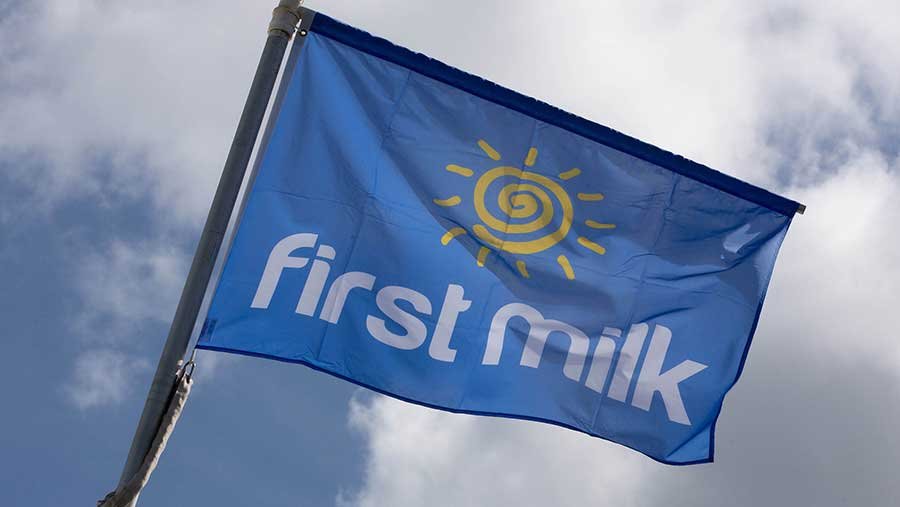Uncertainty about the supply of wheat and oilseeds due to the Russia-Ukraine war has caused huge volatility in UK grain prices, which always follow the global market.
Speaking at an Institute of Agricultural Management event on 1 July, Sebastien Mallet, chief executive officer at grain market analyst ODA, explained that the conflict remains the most significant factor, currently affecting about 90% of price movements.
The weather has also been an issue in recent months, but that risk has now settled.
See also: Strong margins forecast for harvest 2022 before 2023 squeeze
Wheat
UK feed wheat prices increased by £140/t to a season high of £360/t after the war began.
They have been on a downwards trajectory since May due to more favourable weather conditions and discussions about the Black Sea corridor (see “Plan A: Black Sea food and fertiliser corridor”).
Bullish factors
- Black Sea corridor uncertainty
- Northern hemisphere weather during harvest
- Northern hemisphere yields and quality
- Can Russia export 40-45m tonnes of wheat?
- High production costs
- Low stocks
“Say 80% of price moves going forward will be affected by the Black Sea corridor,” said Mr Mallet. “Some are believers [in the corridor becoming a reality], some are not.
“We believe because it has China’s backing, and without the corridor things would collapse.
“Some crops have been damaged by the earlier poor weather and there could yet be a rainy harvest in Europe, so there is risk there for yields and quality.
“Russia has never exported that much wheat before and it will be difficult – maybe only 32-35m tonnes will be available at the end.
“About 90% of production costs have been paid for this year’s crop, but next season there will be a very high impact. If margins are thin, farmers [globally] will not drill more.”
Bearish factors
- Is Black Sea corridor probability up?
- Harvest pressure
- Favourable weather, except in Argentina
- Lower feed demand
- Corn much cheaper than wheat
- Russian and Canadian record crops – nearly 2m hectares more than last year
Together, Russia and Ukraine account for 30-35% of the global wheat crop, so the effect of the Black Sea corridor will be huge, said Mr Mallet.
“The market takes a very narrow view by focusing on the supply risk, because one reason for prices to go up is to ration demand,” he said.
“Livestock farmers in the UK and globally are facing a feed sector crisis, which means lower production and 10-15% lower feed demand for the next few months at least.”
Russian wheat production is now forecast at a record 89m tonnes, which would lead to a minimum 42m tonnes export surplus, though its ability to export such volume in a war context is very questionable, said Mr Mallet.
Ukraine’s new-crop grain production forecast is 50.4m tonnes for 2022 – 67% of the three-year average – of which 18m tonnes is wheat.
Oilseed rape
Pre-war, oilseed rape prices were at €650/t, increasing to a season high of €880/t, before dropping back to about €691.75/t.
Russia and Ukraine are large exporters of oils and oilseeds (accounting for 80% of global exports).
Since the conflict began, crushers have been seeking alternatives, such as rapeseed, which resulted in the price hike.
This was exacerbated by Indonesia’s short-lived palm oil exports ban in April, which resulted in the country having too much stock and boosting exports, meaning OSR has since lost nearly 80% of its peak price increase.
Bearish factors this year include significant higher supplies, lower biofuel mandates and lower energy prices.
“Canada had a canola disaster last year, but is forecast to produce 5-6m tonnes more this year, and Australia and the EU is also expecting higher supplies, so there will be no problem with supply this year,” said Mr Mallet.
“Germany and the UK have proposed a lower biofuel mandate. About 8m hectares in Europe is biofuel, so because of the food crisis, the suggestion is to reduce biofuel crops and replace them with feed crops instead.
“This is a good idea on paper, but the EU is fully against it and confirmed to me at the beginning of this week that it is absolutely off the agenda, because of the energy shortage.
“OSR is very linked to energy prices and lower energy prices is bad for OSR. We believe energy prices have peaked and will reduce.”
Plan A: Black Sea food and fertiliser corridor
Discussions are currently taking place to allow for a Black Sea food and fertiliser export corridor, explained Mr Mallet.
Russia has requested sanctions (while officially not in place, in practice transport links are being blocked) to be removed to ease export capacity, while Ukraine has asked for protection from the UN to guarantee safety on the sea and coastline.
Turkey has reported positive negotiations and said once agreed it will take a month to implement.
The export corridor is necessary because at the beginning of the war there was about 25m tonnes of surplus grain sitting in Ukraine and currently about 20m tonnes remains.
Combined with the 2022-23 crop this will result in a 60-70m tonne export surplus meaning 4.5m tonnes will need to be exported every month – current export capacity is 1.4m tonnes/month.
“It is difficult to believe there will be a safe corridor soon because of all the bombings in the area, but we don’t have any choice,” said Mr Mallet.
“Russia has left Snake Island, which is positive news for the next steps and means the corridor’s probability has increased. It could happen at any time, but we need it before September.”
Storage in Ukraine is a problem because the country’s stores were half-full before harvest. Capacity is 70% of total production and exports need to resume before the arrival of the corn crop.
Crop financing is also a real risk, said Mr Mallet. The country’s farmers have little possibility of selling stocks and if they can, are selling at 50% below world markets.
Without a quick solution, food security risks will spread to 2023-24.
Plan B: Storage solution
The US suggested temporary silos be built at Ukraine’s borders. This has the benefits of being easy, cheap and fast to set up, but nothing has been done yet and the situation is urgent, said Mr Mallet.
What’s next?
Short-term price movers
- Black Sea corridor: Feasibility and timing
- US and Canada weather
- EU and Black Sea yields
- Macros: energy, Covid-19 pandemic, recession, currencies
- Feed demand rationing
Risk management
- A lot of unknowns
- Prices could still move strongly up or down
- Don’t focus on flat price – focus on margins
- Be reactive, favour risk-averse approach for at least 60% of 2022 crop and 30% of 2023 crops
Source: Sebastien Mallet, ODA CEO












